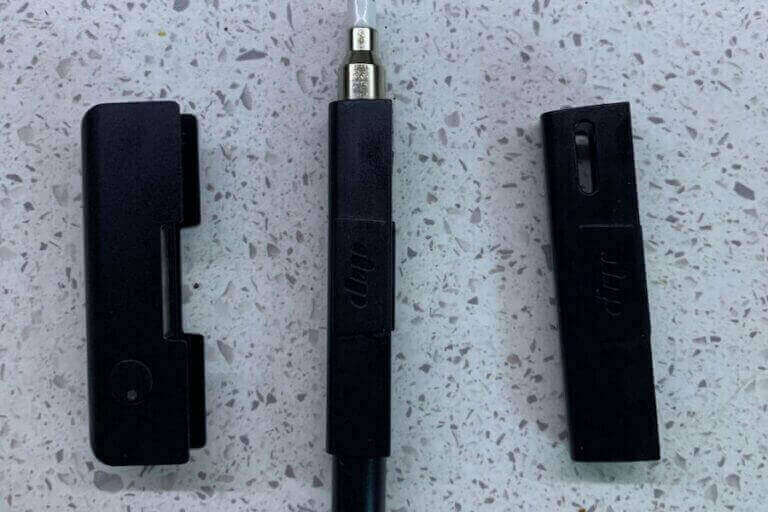A 10-panel drug test is designed to detect ten specific drugs commonly abused by individuals. These drugs include marijuana, cocaine, opiates (such as heroin and morphine), amphetamines, methamphetamines, phencyclidine (PCP), barbiturates, benzodiazepines, methadone, and propoxyphene. Each of these substances has different effects on the body and can lead to various health and behavioral issues.
The inclusion of these specific drugs in a 10-panel drug test is based on their prevalence in society and the potential harm they can cause. By testing for these substances, employers and medical professionals can gain valuable insights into an individual’s substance use history and make informed decisions about their suitability for certain roles or treatment options.
It’s important to note that a 10-panel drug test does not detect every possible drug. There are numerous other substances that may not be included in this specific test. However, the ten drugs covered in a 10-panel drug test are some of the most commonly abused and widely recognizable substances.
How does a 10-panel drug test work?
The process of conducting a 10-panel drug test involves several steps to ensure accurate and reliable results. Let’s take a closer look at how this screening process works:
- Sample collection: The first step in a 10-panel drug test is the collection of a biological sample, typically urine. An individual is given a specimen cup and instructed to provide a urine sample. To maintain integrity, the collection process may be supervised to prevent tampering or adulteration.
- Sample testing: Once the sample is collected, it is sent to a laboratory for testing. In the lab, the sample undergoes a series of tests to detect the presence of the ten drugs included in the 10-panel drug test. These tests may involve immunoassay screening, which is a preliminary test to identify potential positive results.
- Confirmation testing: If the immunoassay screening indicates the presence of drugs, the sample undergoes confirmation testing. This involves more accurate and specific techniques, such as gas chromatography-mass spectrometry (GC-MS) or liquid chromatography-mass spectrometry (LC-MS), to confirm the initial results. Confirmation testing ensures the reliability and accuracy of the test results.
- Result interpretation: Once the testing is complete, the laboratory provides a report detailing the presence or absence of the ten drugs included in the 10-panel drug test. The report may indicate the concentration or level of each drug detected, which can provide additional insights into the individual’s substance use.
The entire process of a 10-panel drug test is conducted in a professional and confidential manner to protect the privacy and rights of the individual being tested. Strict protocols and quality control measures are in place to ensure the accuracy and reliability of the results.
Understanding the accuracy and reliability of 10-panel drug tests
One of the key factors in any drug test is its accuracy and reliability. A 10-panel drug test is known for its high level of accuracy in detecting the presence of the ten drugs it screens for. However, it’s important to understand that no test is 100% foolproof, and there can be false positive or false negative results.
A false positive result occurs when a drug is detected in the test even though the individual has not actually used the substance. This can happen due to various reasons, such as cross-reactivity with other medications or dietary supplements. To minimize the chances of false positives, confirmation testing is performed to ensure accurate results.
On the other hand, a false negative result occurs when a drug is not detected in the test despite the individual having used the substance. This can happen if the drug is present in very low concentrations or if the individual has recently used the drug and it hasn’t had enough time to metabolize and be detected. It’s important to note that a 10-panel drug test is not foolproof and should be interpreted in conjunction with other factors, such as observed behavior or additional testing if necessary.
Overall, while a 10-panel drug test is highly accurate and reliable, it’s essential to consider the limitations and potential for false results. Employers or individuals relying on the results of a 10-panel drug test should take into account other factors and consult with medical professionals if necessary.
Common misconceptions about 10-panel drug tests
Despite the prevalence of 10-panel drug tests, there are several common misconceptions that surround this screening process. Let’s debunk some of these misconceptions and separate fact from fiction:
- All drugs are detected: As mentioned earlier, a 10-panel drug test does not detect every possible drug. It focuses on ten specific drugs commonly abused by individuals. It’s important to understand the limitations of the test and not assume that it covers all substances.
- Instant results: Some individuals may assume that a 10-panel drug test provides instant results. While rapid tests are available, they are typically used as initial screening tools and require confirmation testing for accurate results. The entire process, from sample collection to result interpretation, may take a few days.
- Invasion of privacy: Concerns about invasion of privacy are common when it comes to drug testing. However, a 10-panel drug test is conducted in a professional and confidential manner. The sample collection process is supervised to prevent tampering, and strict protocols are in place to protect the individual’s privacy and rights.
- Test accuracy is infallible: While a 10-panel drug test is known for its accuracy, it is not infallible. False positive and false negative results can occur for various reasons. Employers or individuals relying on the results should consider other factors and consult with medical professionals if necessary.
By debunking these misconceptions, individuals can have a clearer understanding of what a 10-panel drug test entails and the factors to consider when interpreting the results.
Alternatives to 10-panel drug tests
While a 10-panel drug test is widely used and provides a comprehensive overview of an individual’s substance use, there are alternative testing methods available. These alternatives may be suitable for specific situations or requirements. Let’s explore some of the alternatives to 10-panel drug tests:
- 5-panel drug test: A 5-panel drug test is a simpler version of the 10-panel drug test. It screens for five specific drugs: marijuana, cocaine, opiates, amphetamines, and phencyclidine (PCP). This test may be sufficient in situations where a comprehensive screening is not necessary.
- 12-panel drug test: A 12-panel drug test expands on the 10-panel test by including additional substances such as benzodiazepines, barbiturates, methadone, and propoxyphene. This test provides a more comprehensive screening and may be suitable for specific situations where a wider range of substances needs to be detected.
- Hair follicle drug test: A hair follicle drug test involves analyzing a small sample of hair to detect the presence of drugs. This test can provide a longer detection window compared to urine tests and may be useful in situations where recent substance use is not a concern.
- Oral fluid drug test: An oral fluid drug test involves collecting a saliva sample to detect the presence of drugs. This test is non-invasive and provides a shorter detection window compared to urine tests. It may be suitable for on-site or rapid testing scenarios.
The choice of drug testing method depends on various factors, including the specific substances to be detected, the detection window required, and the purpose of the test. Employers or individuals conducting drug tests should consider these alternatives and determine the most appropriate method based on their specific needs.
The importance of 10-panel drug tests in maintaining a safe and drug-free environment
Understanding a 10-panel drug test is crucial for employers, medical professionals, and individuals alike. This comprehensive screening process detects the presence of ten different drugs, providing valuable insights into an individual’s substance use history.
By grasping the specifics of a 10-panel drug test, including the drugs it detects, how it works, and its accuracy and reliability, individuals can make informed decisions regarding employment, personal health, or treatment options. It’s essential to address common misconceptions surrounding drug tests and consider alternative testing methods when appropriate.
Ultimately, 10-panel drug tests play a vital role in maintaining a safe and drug-free environment. They help identify individuals who may be at risk due to substance abuse and allow for appropriate interventions and support. By understanding the ins and outs of a 10-panel drug test, we can contribute to a healthier and more responsible society.








